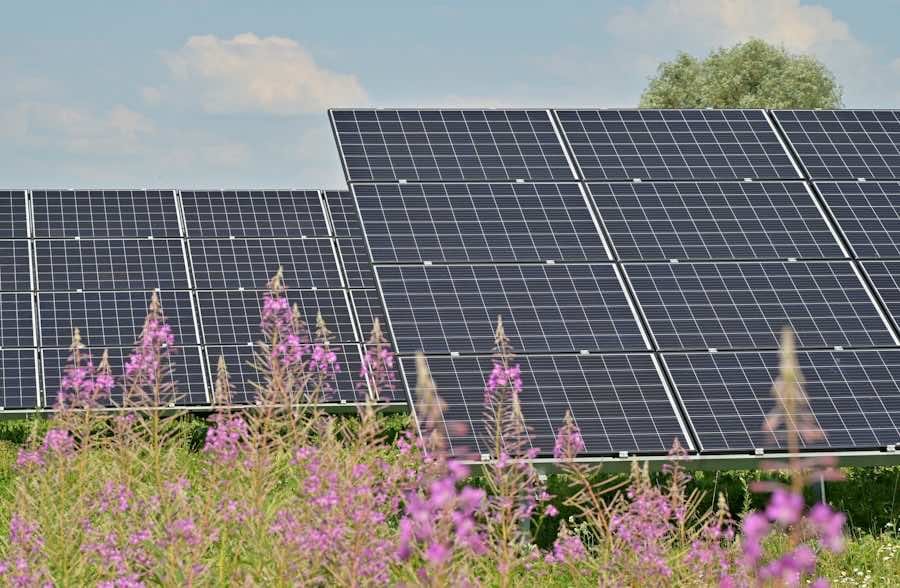Renewable energy financing is a critical component in the transition towards sustainable energy systems. It encompasses the various methods and mechanisms through which funds are raised to support projects that harness renewable resources such as solar, wind, hydro, and biomass. The financing landscape is complex, involving a multitude of stakeholders including private investors, public institutions, and international organisations.
Understanding this landscape is essential for businesses and governments alike, as it directly impacts the feasibility and scalability of renewable energy initiatives. The financing of renewable energy projects often requires substantial upfront capital investment, which can be a barrier for many entities. However, the long-term benefits of renewable energy—such as reduced operational costs, energy independence, and compliance with environmental regulations—make it an attractive investment.
Financial models can vary significantly, from traditional loans and equity investments to innovative structures like power purchase agreements (PPAs) and green bonds. Each of these options has its own set of advantages and challenges, necessitating a thorough understanding of the financial mechanisms available to stakeholders in the renewable energy sector.
Summary
- Renewable energy financing involves securing funding for projects that generate energy from natural resources such as sunlight, wind, and water.
- Businesses are increasingly recognising the importance of renewable energy as a way to reduce their carbon footprint and energy costs.
- Types of renewable energy financing options include power purchase agreements, green bonds, and crowdfunding.
- Government incentives such as tax credits and grants play a crucial role in encouraging investment in renewable energy projects.
- Banks and financial institutions play a key role in providing loans and financial expertise to support renewable energy projects.
The Importance of Renewable Energy in Business
Enhancing Brand Reputation
Transitioning to renewable energy sources not only aligns with corporate social responsibility goals but also enhances brand reputation among consumers who are increasingly favouring environmentally conscious businesses.
A Fundamental Change in Business Operations
This shift is not merely a trend; it represents a fundamental change in how businesses operate and engage with their stakeholders. Moreover, the financial implications of adopting renewable energy are significant. Businesses that invest in renewable technologies often experience lower energy costs over time, as they become less reliant on fossil fuels whose prices can be volatile.
A Competitive Edge through Sustainability
For instance, companies that install solar panels can generate their own electricity, leading to substantial savings on energy bills. Additionally, many businesses are finding that integrating renewable energy solutions can provide a competitive edge in their respective markets. By showcasing their commitment to sustainability, they can attract new customers and retain existing ones who prioritise eco-friendly practices.
Types of Renewable Energy Financing Options

The landscape of renewable energy financing is diverse, offering various options tailored to different project needs and scales. One common method is project financing, where funds are raised specifically for a single project based on its cash flow potential rather than the balance sheet of the sponsors. This approach allows developers to secure capital without over-leveraging their existing assets.
In addition to project financing, equity financing is another prevalent option, where investors provide capital in exchange for ownership stakes in the project. This method can be particularly appealing for larger projects that require significant upfront investment. Another innovative financing mechanism gaining traction is the use of green bonds.
These fixed-income instruments are specifically earmarked for funding projects that have positive environmental impacts. Green bonds have become increasingly popular among institutional investors seeking to align their portfolios with sustainable development goals. Furthermore, power purchase agreements (PPAs) have emerged as a viable financing option for businesses looking to procure renewable energy without the burden of upfront capital costs.
Under a PPA, a company agrees to buy electricity generated by a renewable project at a predetermined price for a specified period, thus providing revenue certainty for developers while allowing businesses to secure stable energy costs.
Government Incentives for Renewable Energy Projects
Governments around the world play a pivotal role in promoting renewable energy through various incentives designed to stimulate investment and innovation in the sector. These incentives can take many forms, including tax credits, grants, subsidies, and feed-in tariffs. For instance, in the United Kingdom, the Renewable Heat Incentive (RHI) provides financial support to businesses that generate heat from renewable sources, encouraging the adoption of technologies such as biomass boilers and heat pumps.
In addition to direct financial incentives, governments often implement regulatory frameworks that facilitate the growth of renewable energy markets. This includes establishing renewable portfolio standards (RPS) that require utilities to obtain a certain percentage of their energy from renewable sources. Such policies not only create a stable market environment but also signal to investors that there is a long-term commitment to renewable energy development.
Furthermore, international agreements like the Paris Agreement have spurred nations to set ambitious climate targets, further driving the need for supportive policies and incentives that encourage investment in renewable technologies.
The Role of Banks and Financial Institutions in Renewable Energy Financing
Banks and financial institutions are integral to the success of renewable energy financing, providing essential capital and expertise to facilitate project development. These entities often assess the viability of renewable projects through rigorous due diligence processes, evaluating factors such as technology risk, market conditions, and regulatory frameworks. Their involvement can significantly enhance the credibility of a project, attracting additional investors who may be hesitant to commit funds without the backing of established financial institutions.
Moreover, many banks are increasingly recognising the importance of sustainable finance as part of their corporate strategies. This shift has led to the development of specialised green finance departments within major banks that focus exclusively on funding renewable energy projects. These departments not only provide traditional financing options but also engage in innovative solutions such as blended finance models that combine public and private funding sources to mitigate risks associated with renewable investments.
By leveraging their expertise and resources, banks can help bridge the financing gap that often exists in the renewable energy sector.
Challenges and Risks in Renewable Energy Financing

Despite the growing interest in renewable energy financing, several challenges and risks persist that can hinder project development and investment. One significant challenge is the inherent uncertainty associated with regulatory frameworks and government policies. Changes in political leadership or shifts in public sentiment can lead to abrupt alterations in incentives or support mechanisms, creating an unpredictable environment for investors.
This uncertainty can deter potential financiers who may be reluctant to commit capital without assurance of stable returns. Additionally, technological risks pose another challenge in the renewable energy sector. While advancements in technology have made renewable solutions more efficient and cost-effective, there remains a degree of uncertainty regarding the long-term performance and reliability of emerging technologies.
For instance, while solar photovoltaic (PV) technology has matured significantly over the past decade, newer technologies such as floating solar or advanced battery storage systems may still face performance uncertainties that could impact investor confidence. Furthermore, securing adequate land access and navigating local permitting processes can also present logistical challenges that delay project timelines and increase costs.
Case Studies of Successful Renewable Energy Financing in Business
Examining successful case studies can provide valuable insights into effective strategies for renewable energy financing within businesses. One notable example is Google’s commitment to sustainability through its investment in renewable energy projects worldwide. The tech giant has signed numerous power purchase agreements (PPAs) with wind and solar farms across various countries, enabling it to operate on 100% renewable energy since 2017.
By leveraging its financial strength and negotiating long-term contracts with developers, Google has not only reduced its carbon footprint but also stabilised its energy costs over time. Another compelling case is that of Ørsted, a Danish energy company that has transformed its business model from fossil fuels to renewables over the past decade. Ørsted has successfully financed large-scale offshore wind projects through a combination of equity investments and green bonds.
The company’s strategic focus on sustainability has attracted significant investor interest, allowing it to raise capital efficiently while positioning itself as a leader in the global transition towards clean energy. These examples illustrate how innovative financing strategies can enable businesses to achieve their sustainability goals while simultaneously delivering financial returns.
Future Trends in Renewable Energy Financing
As the global demand for clean energy continues to rise, several trends are emerging within the realm of renewable energy financing that will shape its future landscape. One prominent trend is the increasing integration of technology into financing processes through digital platforms and blockchain solutions. These innovations can streamline transactions, enhance transparency, and reduce costs associated with raising capital for renewable projects.
For instance, blockchain technology has the potential to facilitate peer-to-peer energy trading models that empower consumers to buy and sell excess renewable energy directly. Additionally, there is a growing emphasis on impact investing within the financial community, where investors seek not only financial returns but also measurable social and environmental benefits from their investments. This shift is likely to drive more capital towards renewable energy projects that demonstrate clear positive impacts on communities and ecosystems.
Furthermore, as climate change becomes an ever-pressing issue, we can expect increased collaboration between public and private sectors to develop blended finance models that leverage both government support and private investment to accelerate the deployment of renewable technologies. In conclusion, understanding the intricacies of renewable energy financing is essential for stakeholders aiming to navigate this evolving landscape effectively. As businesses increasingly recognise the importance of sustainability in their operations, innovative financing options will continue to emerge alongside supportive government policies and institutional involvement.
The future of renewable energy financing holds great promise as it adapts to meet the challenges posed by climate change while fostering economic growth and innovation.
If you are interested in learning more about financial aspects of running a business, you may want to check out the article on how to complete your VAT return. Understanding tax obligations is crucial for any business owner, and this article provides valuable insights on this topic.
FAQs
What is renewable energy financing in business?
Renewable energy financing in business refers to the various methods and sources of funding that businesses can use to invest in renewable energy projects, such as solar, wind, hydro, and biomass. This can include loans, grants, tax incentives, and other financial mechanisms to support the development and implementation of renewable energy technologies.
Why is renewable energy financing important for businesses?
Renewable energy financing is important for businesses as it allows them to invest in sustainable and environmentally friendly energy sources, which can lead to cost savings, energy independence, and a positive brand image. It also helps businesses to meet regulatory requirements and reduce their carbon footprint.
What are the different types of renewable energy financing available to businesses?
There are various types of renewable energy financing available to businesses, including project finance, green bonds, venture capital, private equity, government grants and incentives, power purchase agreements, and tax credits. Each type of financing has its own advantages and considerations, depending on the specific needs and circumstances of the business.
How can businesses access renewable energy financing?
Businesses can access renewable energy financing through various channels, such as banks, financial institutions, government agencies, venture capital firms, and private investors. It is important for businesses to research and understand the different financing options available to them, and to develop a comprehensive business plan and financial model to attract potential investors or lenders.
What are the benefits of investing in renewable energy for businesses?
Investing in renewable energy can provide businesses with a range of benefits, including long-term cost savings on energy bills, protection against volatile energy prices, enhanced corporate social responsibility, compliance with environmental regulations, and potential revenue streams from selling excess energy back to the grid. Additionally, it can improve the overall sustainability and resilience of the business.
